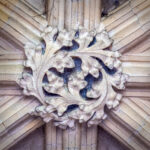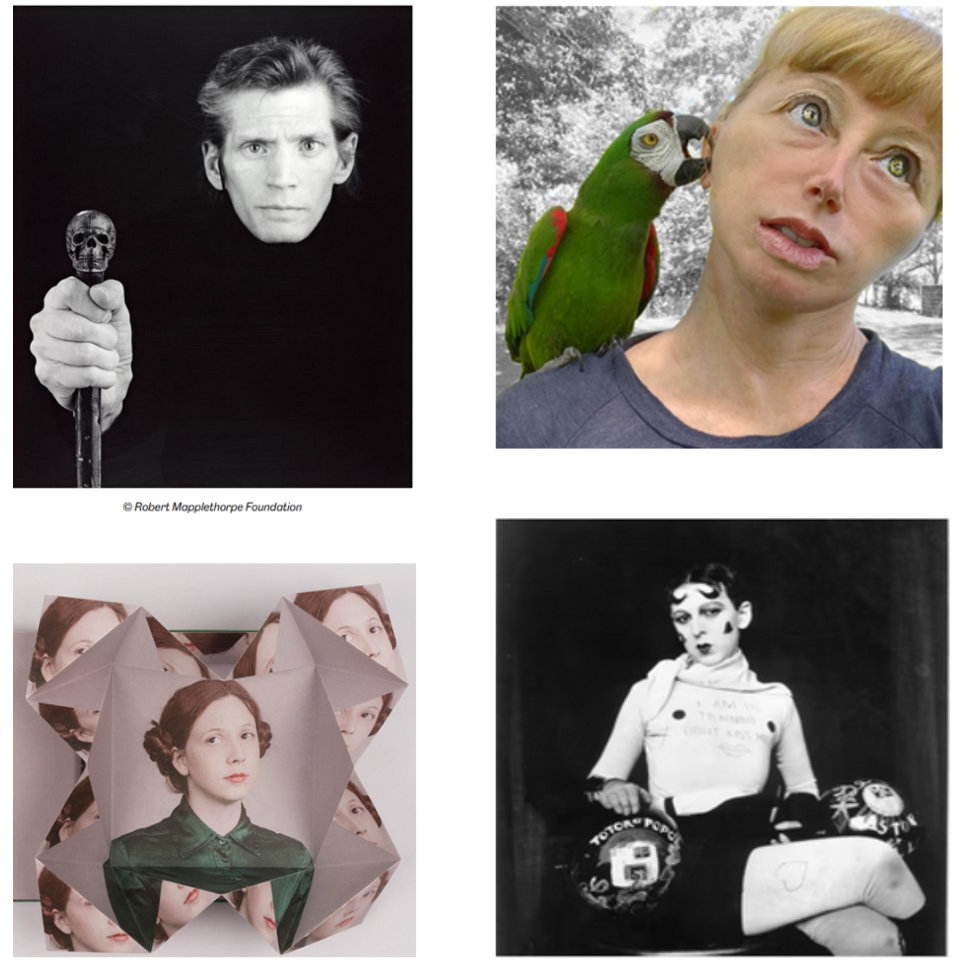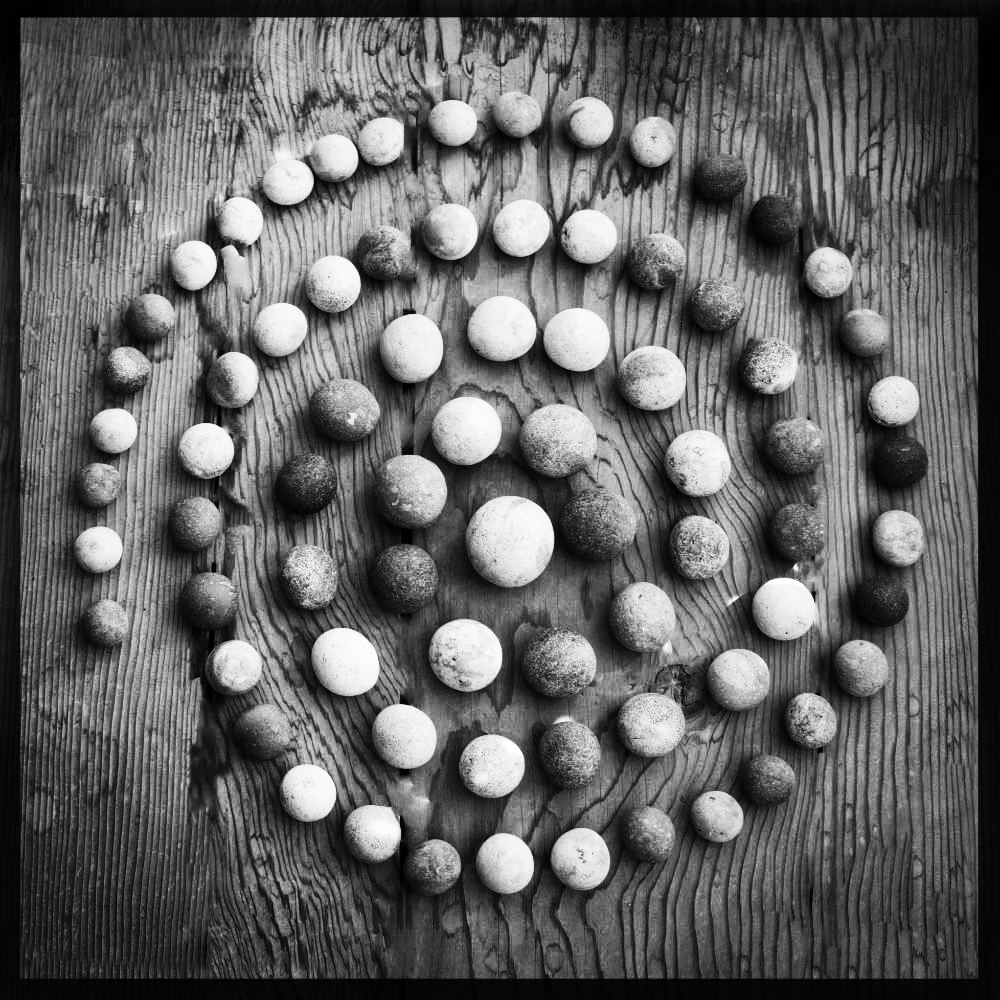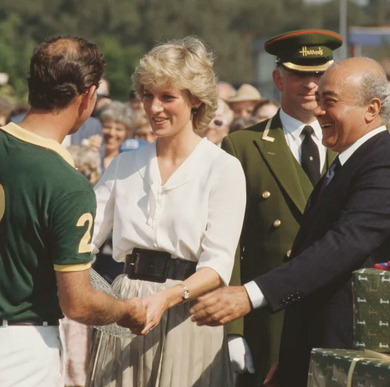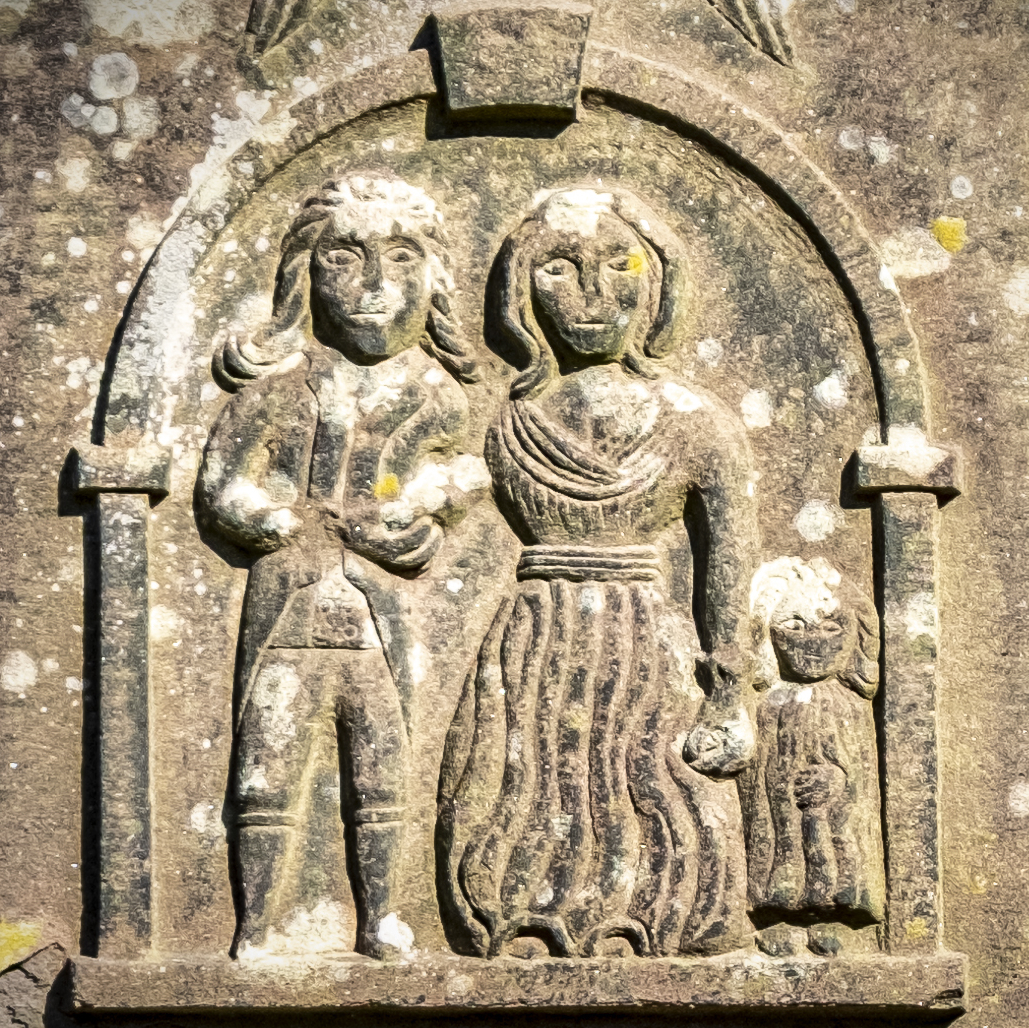On looking at the suggested photographer / artists in the course material I am struck by how the repetition of a successful idea, technique or process results in an exploratory project that becomes a body of work.
Vivian Maier
Vivian Maier’s popularisation has focused our attention on the art of self-portraiture and street photography in monochrome. We see in her work her experimentation, humour and creativity. Her monochrome images are said to be well balanced, which is all the more interesting as she put her rolls of film into the local camera shop to be developed. We can’t actually know what were in the packets that were presented to her, as I am sure that more care is taken with the images we see now, having been printed by experts for public exhibition.

She was a loner who spent most of her spare time with her camera, for her own pleasure, seeking out locations and situations for her photographs. She often uses the mirrors to frame her own image. I like this one especially. She is standing behind a man loading a truck with a mirror, she seems to be smiling which you do not see much of in her self portraits.
When considering her reflections in windows, mirrors or anything with a reflective surface I have thought about how she seems to take her self-portraits. Holding a camera at your chest level and looking forward as if being photographed by someone else and yet still being able to press the shutter button is difficult. She has 4 or 5 default positions which could help me if I decide to do a ‘reflection’ image…
- Looking forward, which means the angle between the lens at chest height and her eyes gives the impression in the photograph of her looking into the distance.
- Looking down at the upside-down image in her Hasselblad view finder. I find this an odd ‘pose’, although in street photography it is probably a useful strategy as it seems to enable you to step back from the possibility of eye contact when photographing street scenes, your attention appears to be elsewhere to those you are photographing, not on the scene you are attempting to capture When trying this I have flipped out my ‘live view screen’ to achieve a similar effect.
- Looking to the side. It very much depends if you have a good side! 😊
- She has self-portraits that are double exposures which I’ve always found very difficult to manage. She seems to use the black areas in her clothing to superimpose another image. Or are they reflections? I don’t think some of these are as successful as compositions as it appears as a puzzle of different layers.
- Sometimes in her ‘reflection’ self-portraits where she is the main subject, her eyes are on the developing scene around her, she seems to be focused elsewhere, on a passer-by perhaps. (VM1957W03410-07-MC 1957).
- And then there are the shadow images which are dated around 1956. These put you in mind of images by Lee Friedlander.
For this assignment I did consider a mirror / reflection image but I had another idea more in keeping with who I feel to be. However, my OCA profile image is a reflection in a mirror that was leant up against a window so I had the advantage of the light streaming in through the window.
Cindy Sherman
Cindy Sherman’s body of work is impressive. Whilst her photographs suggest self-portraiture, the idea of using herself as the model where she takes on a role or identity in imaginative scenes are so immaculately designed that her own identity is obscured. The personas she illustrates are representations and stereotypes of personalities and scenes that we can identify with but with an edgyness that makes us feel uncomfortable about the social situations in the portrayal.
Cindy Sherman is absolutely adamant that non of the images are autobiographical. Maintaining this stance she shies away from interviews about herself and her photographs and avoids portraits of her ‘true’ image. She has said she is attempting to lose her ‘self’ and become someone else, not show aspects of her personality.

I am in awe of her creativity and acting ability. However Sherman’s Instagram account (as in the image here) probably has the most accessible photographs in terms of offering image ideas as they are not focused on having a created scene and an actor within it. Her work here appears to be using art filters on a mobile phone. – More my granddaughter’s scene than mine. Throughout her oeuvre she is more “an artist who uses photography”
Alma Hasa
Many of her innovative ideas come from revisiting ‘Happy Accidents’ (Bob Ross) or failures as she called them. Her work includes paper folding, weaving, ripping and crumpling.
I’m likely to say this over and over that I do not understand surreal art and probably therefore do not give it the intellectual attention it requires. No idea mostly of what the artist meant. I can make up stuff according to things that I know about… but who actually knows unless the artist tells you, and why would they unless the photograph doesn’t do the work. (I suspect those words will come back to haunt me!)

I find the Cosmic Surgery images unsettling (they are not self-portraits). However thinking about her technique and how Hasa achieves the images in Cosmic (cosmetic) Surgery using origami, it is possible to ‘copy’ that idea with a different subject by backwards engineering your origami. It’s the way I’ve printed folded books.
Why would you do this do this? The tomatoes? …unnerving!
Its the surrealism thing again, trying to do violence to the observer’s sense of reality.
Some of her motherhood portraits are quite to the point, I understood those.

Henri Lartigue
Here is another photographer who used his camera for his own pleasure, very much like Vivian Maier, and like her was to be ‘discovered’ late in life. He used his camera to record his own life and the life of those around him.
I love this very early image of Lartigue as a young boy in the bath. His mother pressed the shutter but he staged it and set up the camera. It is a ‘care-free’ image. You are drawn first to his face and the reflection in the water then to his hydro-glider, then you have a look around at the environs where the bathroom furniture could be considered a distraction. It is one of those images that marks the beginnings of a journey through life with a camera.

Jon Rafman
We are asked to consider whether objects in a still life can represent us as a self-portrait. I can agree in principle with the course material assertion that “all photographs you make contain a small part of you” It is human nature to make judgements about a person from what that person does, makes and says. If Jon Rafman’s still life work is a form of self-portrait, then I find the world he inhabits strange and frightening and just plain unpleasant.
The film “Still Life (Betamale)” (2013) is it seems a narrative presented to us so that we can observe a hidden internet world based around the existence of obsessions, porn and grossness. The still life component that we are asked to consider in the course material is, I suspect, rather than a self-portrait, part of that narrative of exposure.
Rather than “It is possible to believe you are gazing into an eternity” it is a nightmare.
Rafman, I hope, does not work amongst the keyboards we see here covered in grease, food and other unmentionable items, multiple squashed empty coke cans and other food, cigarette debris and trash covering the desks. We are, I imagine, not to consider this representative of Rafman himself, but to see it as a composition illustrating that this is what an over attachment to a digital world might lead to. Which then would make it a portrait of the self we might become.
I have considered what objects I might collect together to stand as a representation of me. If I’m uncomfortable with an actual self-portrait and the judgements that might be made, I would be even more uncomfortable with a physical collection of items associated with me. I suspect they might be even more revealing!
Robert Mapplethorpe
When you go looking for self-portraits by Mapplethorpe there are so many, from the upbeat sexy nudes with Patti Smith in the late 1960’s [Johnston, K. (2019)] which are almost informal, personal images, to the austere dark self-portraits once he had his AIDs diagnosis, and in between the self-portraits where he adopts different identities (for example as a transvestite) exploring his own sexuality, nudity and making sexually explicit images along with ‘straight’ self-portraits.
I like this one because I have seen that background on another image (I’ll pop the reference in here when I find it) and I wondered whether he had his ‘teddy boy’ hair coiffured at the back specially for this image or whether it is a hair-piece. It made me smile – a denial of self-portraiture .
I prefer his beautifully made male nude photographs. They hark back to classical Greek statues however they are very modern in style too. I also like his flower images. The sexual overtones are there but…

In this image the black background obscuring his body and white head and hand, is full of symbolism foretelling Mapplethorpe’s death. It was made a couple of months before he died. Without knowing about his AIDs diagnosis you would know that this is about mortality. We see his floating (ghostly) head with its staring deadpan eyes, emulating the eye sockets of a skull, and a large hand holding a skull topped cane almost pronouncing death is here.
This black and white image is very much in keeping with his earlier self-portraits – still exploring his personal relationship with life as it can be lived.
Claud Cahun
Claud Cahun has used photography to explore her/his/their gender identity. Cahun did this by using a surrealist approach, which in this case I can understand, as she/he is struggling with a social reality that did not ‘fit’ with her/his gender-neutral identity.

Again, like so many other photographers, her photography was a personal exploration not for the public gaze. Her images are interesting from a historical perspective, and given the current acceptance of gender differences, Claud Cahun’s images have risen to prominence.. Looking through the Jersey Heritage collection of self-portraits the above photograph is more in keeping with a lot of her/his remaining work. Not everything produced was about gender identity.

These images demonstrate some of the performance elements in the self-portraits.
Younger self images are a disavowal of ideas of conventional feminine beauty, when issues of identity are most difficult. The self-portraits made in later years in Jersey in the 1930’s and 40’s seem more accepting of her/his female sex identity.
